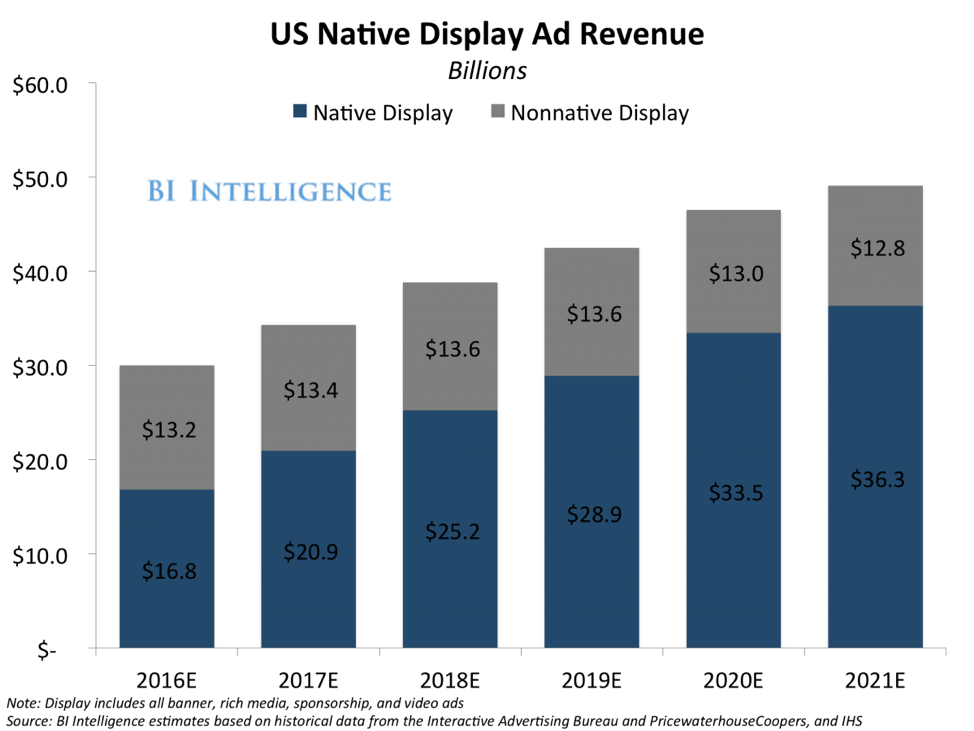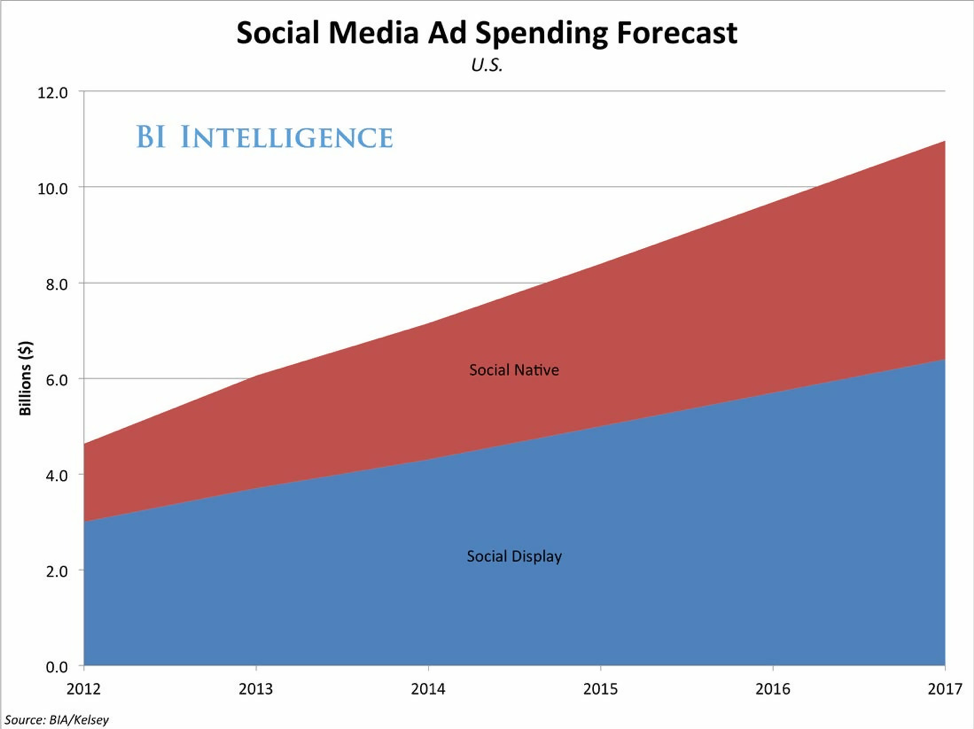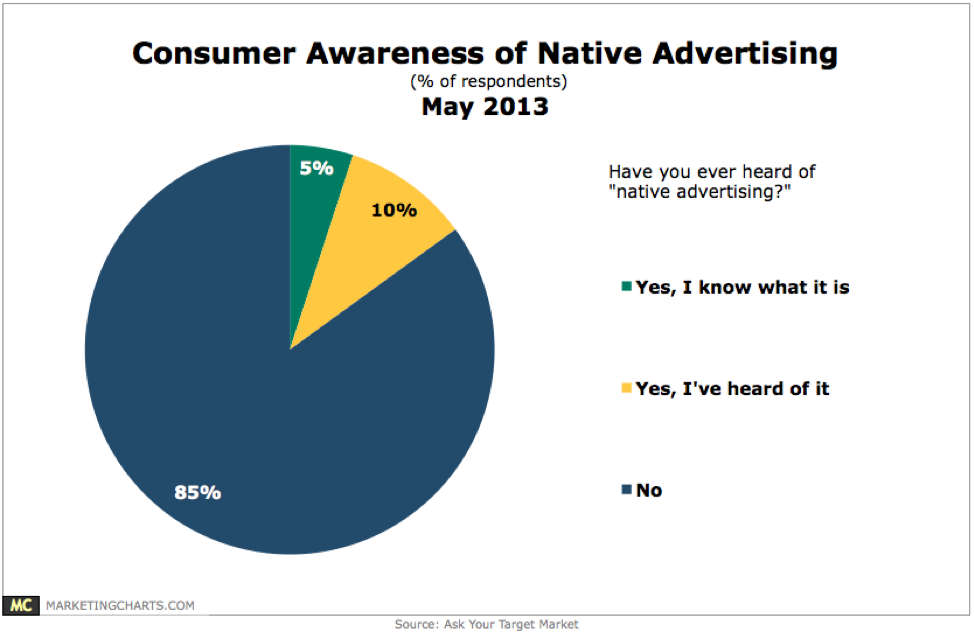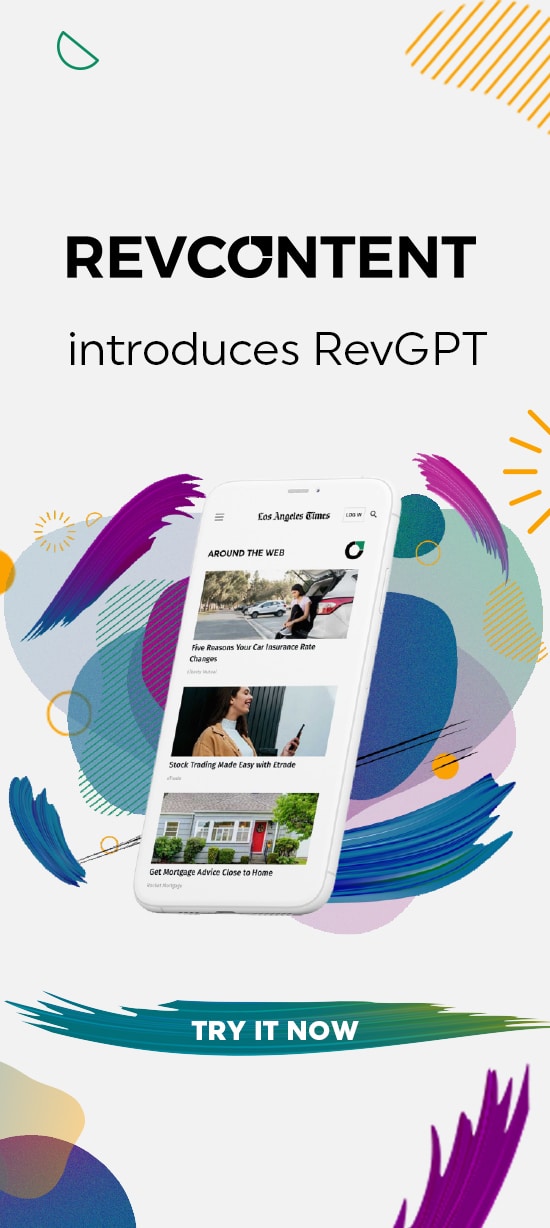The Ultimate Native Advertising Guide for 2020
Everything You Need to Know About Native Advertising and Making It Work for You
As a marketer, you are always looking for the best ways to reach your target audience. You want to do more than just serve ads in places that you hope will get traction. You put in the time and effort to understand your demographic and ideal customer in order to create ads that you believe will appeal to them and make them want to know more or buy a product. Yet, you find that when you are using the same old tried and tired tactics, you only receive diminishing returns on your efforts.
It can be disheartening to see that all of the tactics that you had used in the past no longer have the ability to get customers to click and convert. However, those who have been in marketing for any length of time know that you can’t stick to the old methods and hope for success in the modern world. You need to be willing and able to adapt, to learn and employ new and better methods. The best option that’s available today is called native advertising. This guide will help you to have a better understanding of why they are so important, how they can help, and what you need to do to start using them to great effect.
The Problem with Regular Ads
People are bombarded with advertisements throughout most of their day. They see ads on billboards when they are on their way to work, they hear ads on the radio and on television, and they see a near-constant stream of ads when they are online. Unfortunately, most of these ads feel intrusive, which makes people dislike them from the start. It’s one of the reasons that streaming services like Spotify and Hulu have paid options to remove the ads.
In addition, many people end up getting to the point where they ignore the ads entirely and no longer notice them. They know the ads are there, but they simply don’t acknowledge them. They essentially become invisible. This is bad news for marketers. Fortunately, native ads can provide you with the power and reach that you need to once again start bringing in more and more customers. Many others have already started using the power of native advertising in a range of industries. It has been quite prominent in the travel and automotive fields.
What Is Native Advertising?
Native advertising removes the feeling of intrusiveness that most other types of ads cause. This is because they are made to adhere to the look and the style of the location where they appear. They look very similar to the rest of the content on the social media site or webpage and they don’t stand out the way that a typical banner ad or sidebar ad might. The entire goal of this type of advertising is to be nondisruptive and to look as if it is a native part of the page you are visiting.
The viewers are more likely to see this as a part of the regular content at first glance, so it doesn’t jump out at them to be an intrusive ad. People are far more likely to click on one of these native ads than they are a traditional ad.
However, it would be disingenuous to seamlessly blend an ad into regular content. The FTC (discussed later in the guide) and other regulatory bodies want to make sure that people are not duped into believing that something is content from a site when it is instead a paid ad. Therefore, even though they have a native appearance, there will still be ways for people to distinguish that they are an advertisement. The manner in which this is done will differ based on where you are running the ads.

(Credit: https://www.businessinsider.com/the-native-ad-report-forecasts-2016-5)
For example, on social media, you will see that the ads actually appear right in the feed of places like Twitter and Facebook. They are often denoted as sponsored posts, so people will be able to understand that they are advertisements. Native ads that are running in Google will appear in search and promoted listings on Google search results, or the search results of other sites. Content recommendations could appear on webpages below an article that was just read, or they might appear as a featured video on a platform like YouTube. Words such as sponsored, suggested, or promoted will typically accompany these types of advertisements to denote them as such.
Native ads are a powerful option that all online marketers should start using as soon as possible. Despite the fact that they are ads, they feel more natural and people are more open to them. Business Insider believes that by 2020, native ads will drive 74% of all ad revenue. One of the reasons for the increase in these types of ads, other than the fact that they work so well, is the importance of social media in our lives. Social media is ever-present, and popular sites like Twitter and Facebook have made it easy to integrate these native ads into their platforms.
Why Are More Marketers Starting to Use Native Advertising?
Native ads are becoming one of the best tools for marketers because people are more likely to look at and engage with these ads. They can improve the purchase intent and they have better visual engagement than other types of ads. This is because these types of ads do not have the problem of ad fatigue. As mentioned, many people have trained themselves to simply ignore ads. Even if there might be products, services, or content that would interest them, if it looks like an ad, they will automatically ignore it.
By using native ads that more closely mimic the other content on the site, they are more likely to look at it and more likely to click. You just need to make sure that the content where it appears is interesting and engaging, and that your ads will be able to deliver on the promise that you make.
Even though people clearly know they are looking at advertising, because of the nature of the advertising and the content that it can offer, they don’t mind. This helps to drive more clicks and more sales for the marketer.
Native Advertising Has Been Around Longer than You Might Think
While many believe native advertising to be a brand new concept that was created only a few years ago, it has actually been around for a very long time. There were ads in early newspapers from the first part of the 1900s and onward that would use similar strategies to what is being used today. It has also been a part of radio, film, and television in various capacities over the years. It was only natural that it would eventually come to the Internet.
Social networks, sites like Buzzfeed, and powerhouses like Google have embraced the native ad, and marketers are following suit. Facebook and Twitter are native ad platforms that have done extremely well for marketers. If you want to keep up with the competition, it is something that you will have to do, as well. Fortunately, unraveling the native ad and making it a part of your game plan is not as difficult as some people might make it out to be. It is important to understand the various types of ads that can show up, along with some basic elements of their structure.
What Is the Basic Structure of a Native Ad?
You will find that native ads tend to have similar elements to other types of ads. They will have a headline that serves to get the attention of the viewer, as well as ad copy, and often an image. There is also a call to action. The copy will describe what the viewer can expect when they click on the link to a different site. The difference is that these ads blend into the site where they are listed, so they appear similar to the content of the page. However, there are many different types and styles of native ads depending on the types of sites where they will be located and the goals of the marketers.
Examples of Native Advertising
There are many different ways to create and use native ads today, which is good news for marketers. This means that there should be ways to reach and appeal to just about every type of customer out there. To get a better idea of native ads of various types and to learn how they work, let’s look at a few examples. These are not the only types of native advertising that are available, but they are ones that are most commonly used by businesses. These tend to be very effective and using one or several of these might be right for your business.

Sponsored Posts on Social Media
One of the most common types of native ads that are used and seen on the web today are promoted posts on social media. As we touched on above, you have probably seen these on Twitter and Facebook. They also happen to be very popular on Instagram. People use these ads to promote their own brand, but they create ads that work well not only with the platform but also with certain types of viewers. Later, we will be talking about the power and benefits of programmatic native advertising, which can better target customers.
In-Feed Units
These types of native ads are content that will appear in the newsfeed of other content or as a part of a list of other content. There are three different types of in-feed units used. There is one that is a part of a publisher’s normal content. These ads are actually in a story format, and they will appear on a page of the publisher’s website. They may have been written by the ad creator or they may have been written in conjunction with the publisher’s site. This type of ad content matches the publisher’s site and mirrors the other type of content that is on the site.
There is another similar option with these types of native ads. They will appear in the content well of the publisher, but the ads themselves are not on the site. Instead, they are links that will then take the reader to your brand’s landing page or editorial content.
The third version of this in-feed ad is a story format displayed in the publisher’s content well. They can consume the content without leaving the page. The content might be something to read, a video to watch, or a game that they can play.
Native Search Ads
While most people are familiar with search ads, native search ads are a bit different. They will have their content presented in a way that looks similar to the organic search results rather than the paid search results. These will show up in-stream and they match the page function where they show up. They tend to be narrowly targeted and will typically attempt to create a direct response, such as requesting someone to download something or to request a sale.
In-Ad Native Ads
These types of ads appear within IAB (International Advertising Bureau) containers, meaning the ads conform to the IAB standards. They are not within the editorial or content well, as is the case with other types of native ads described above. Even though they are not a part of the typical stream, they are still relevant to the content on the page where they appear. They also match the page’s context and have a guaranteed placement. The marketer might have a link that would take the user to the marketer’s site, which would then have similar content on the site where the ad appeared.
Promotional Listings
Promotional listings will match the page function and will appear in-stream. They will be labeled as being a promotional ad, but they will work well within the rest of the page’s context. They will look very similar to the other types of services or products that are placed on a site.
Keep in mind that these are only some of the many different types of native ads that are used today. There are many options and methods of creating ads that work well on the pages where they are located, and that can get attention from the people who are visiting and using those sites.
The Difference Between Content Marketing and Native Advertising
It is very important to realize that there are distinct differences between content marketing and native advertising, even though you might hear some people using the words interchangeably. Native ads and native marketing are a very specific method of marketing, as you have seen above.
Content marketing, on the other hand, has a larger scope and the goal is focused on long-term successes rather than the success of an advertisement. Both native ads and content marketing will help to raise brand awareness and will target specific groups of people. In fact, they are typically the same groups of people.
Content marketing is not just a single piece of content, as is the case with an ad. Instead, it is a body of content that can include blogs, articles, videos, whitepapers, etc. The content that is shared is owned by the business and runs on their platforms or on their specific social media accounts, YouTube channels, etc. Native ads run on platforms that the company does not own. They are leveraging the reach of those other platforms with the ads, ultimately trying to get those people to click a link, visit their site, buy a product, etc. Both of these types of marketing can breed success and both will be used by smart marketers.
Understanding Programmatic Native Advertising: Taking Things to the Next Level
Thus far, we’ve discussed common strategies for native ads, but there is yet another strategy available. This is known as programmatic native advertising, which allows you to provide targeted native ads to specific consumers. You can do this in real-time and at scale, which allows you to optimize your return on investment because you are able to target real people very quickly.
It features the same benefits that are had through regular native advertising, but because they are served to the right people at the right time, it allows for greater success. This targeted response will typically mean there will be greater engagement with those ads, and this can lead to a higher conversion rate.
What Needs to Go into a Native Ad for It to Be Successful?

Marketers need to make sure they are putting as much effort into creating native ads as they do other types of marketing content if they hope to achieve real success for their clients. Before you can even start, you will need to make sure that you have ads that are going to work.
(Credit: https://trends.e-strategyblog.com/2013/06/06/consumer-awareness-of-native-advertising/11738)
You will want to start with the titles. The title of the native ad needs to attract attention right away. Having a clear message that people can understand easily is important. You may also want to choose an action phrase that will make people more likely to view the ad and think about clicking it. Additionally, you want the titles to be short and catchy.
Images are also important. While they may not always be needed depending on the native ad platform you are using, they can increase the click-thru rate on the ad. The image should be vibrant and attention-grabbing, and it should fit with the title that you have chosen.
The ad copy should also be clear and give the reader a good indicator of exactly what they can expect when they decide to click on the ad. Of course, you also need to follow through with that by creating a landing page or other page that lives up to those expectations.
Offering disclosure that it is an actual advertisement is essential, as well. While many web users today know that “sponsored” or “promoted” content is an add, that is not the case in all situations. As you will see in the section on the FTC below, making it clear that the content is an advertisement is essential. This ensures you stay on the good side of the FTC, as well as consumers. While the number of consumers who know and understand what native ads are has increased, over the years, there are still many who do not. Disclosure is essential.
In addition, once you have ads that you believe will work well, you want to make sure that you are partnering with the right publishers. You want to find those that will be best suited to the audience that you are trying to reach.
Native Advertising and the FTC
According to the FTC, any practice that is misrepresenting or omitting information that can mislead a consumer is against the law. This is why it is so important to ensure that the native ads are clearly marked in the ways mentioned as being advertisements. According to the FTC, the most important thing is transparency. The ad should not make people believe that it is anything other than an ad, sponsored or promoted content, etc. If an ad looks exactly like the other content, there needs to be some sort of disclosure that shows that it is an advertisement.
The FTC is very serious about these regulations being followed. Those who are in the business of this type of marketing understand this and have created native ad content that are clearly ads, but still attract customers.
Get the Right Help for Your Native Ads
As you have seen, there are plenty of excellent reasons to start using native ads as a major part of your marketing strategy. Those who want to learn more and who want to have help in getting involved with native ads should speak with the professionals who know, understand, and utilize these ads on a regular basis. It will also ensure that you are creating and using ads that fall in line with the rules by the FTC. The sooner you start to incorporate native ads into your campaigns the sooner you will be able to reap the benefits.
Sign up on RevContent to get started, and learn more about native advertising here.
Through content discovery, RevContent enables publishers and advertisers to engage and grow audiences, develop loyal customers and drive revenue. Sign up or login to your account.




